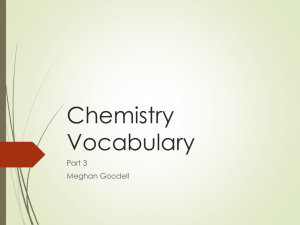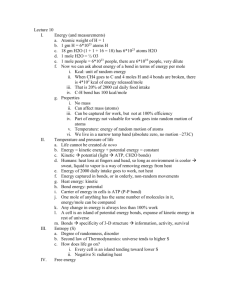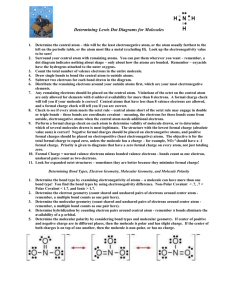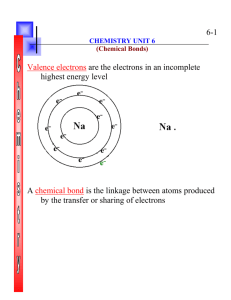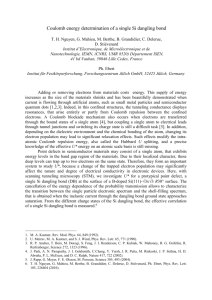AS Chemistry - Module 1 Definitions
advertisement
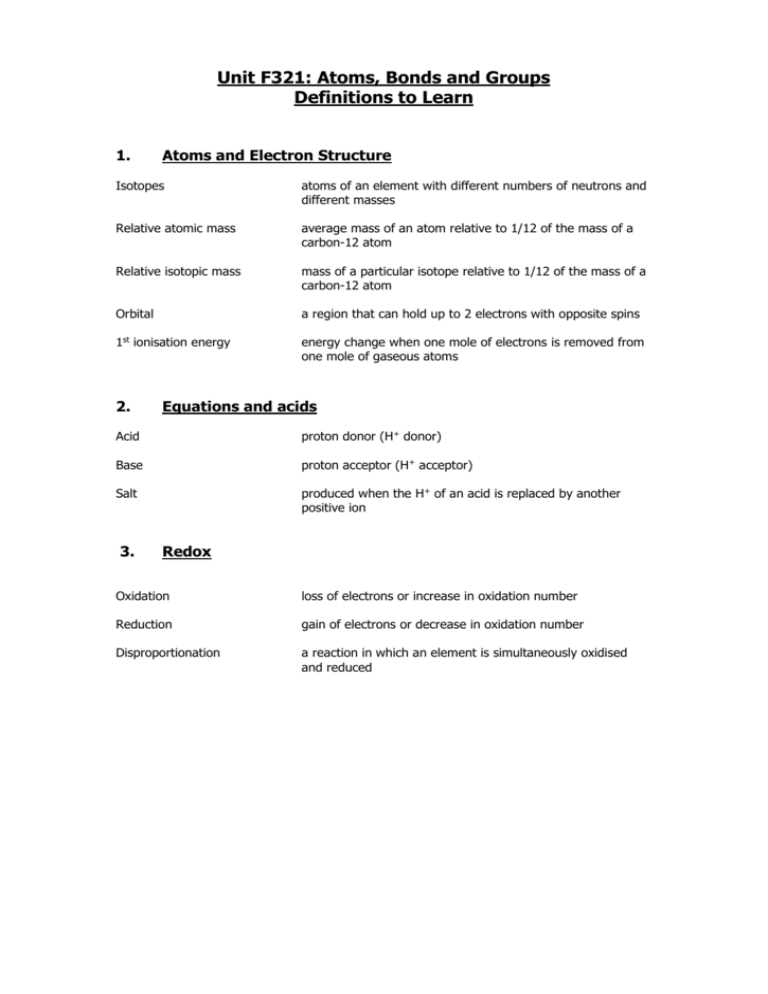
Unit F321: Atoms, Bonds and Groups Definitions to Learn 1. Atoms and Electron Structure Isotopes atoms of an element with different numbers of neutrons and different masses Relative atomic mass average mass of an atom relative to 1/12 of the mass of a carbon-12 atom Relative isotopic mass mass of a particular isotope relative to 1/12 of the mass of a carbon-12 atom Orbital a region that can hold up to 2 electrons with opposite spins 1st ionisation energy energy change when one mole of electrons is removed from one mole of gaseous atoms 2. Equations and acids Acid proton donor (H+ donor) Base proton acceptor (H+ acceptor) Salt produced when the H+ of an acid is replaced by another positive ion 3. Redox Oxidation loss of electrons or increase in oxidation number Reduction gain of electrons or decrease in oxidation number Disproportionation a reaction in which an element is simultaneously oxidised and reduced 4. Moles and Equations Amount of substance the number of moles of substance that you have Mole unit for amount of substance Avogadro constant, NA number of particles present in a mole (6.02 x 1023 mol-1) Empirical formula simplest whole number ratio of the atoms of each element in a compound Molecular formula actual number of atoms of each element in a molecule Concentrated containing a large amount of solute per dm3 (say 10 mol dm-3 or more) Dilute containing a small amount of solute per dm3 (say 2 mol dm-3 or less) 5. Bonding and Structure Ionic bond electrostatic attraction between oppositely charged ions Covalent bond a shared pair of electrons Metallic bond attraction between positive ions and delocalised electrons Electronegativity ability of an atom to attract the electrons in a covalent bond Hydrogen bond attraction between a lone pair and a hydrogen atom attached to O, N or F 6. The Periodic Table Periodicity patterns repeated across different periods (rows of the Periodic Table)

